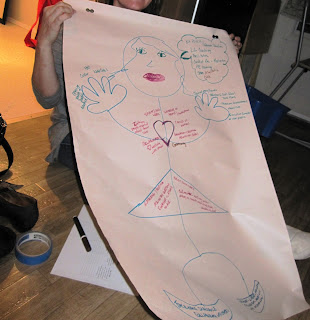Tweet the message! Recently, in several facilitated sessions, when participants work in small groups and report back to the entire group, I have asked them to summarize the key message from their discussion in a tweet. The tweet is either written on a flipchart on in a laptop to project. My only rule is to keep the tweet to 140 characters.
The summary tweet is met with great enthusiasm! Participants respond much more positively than when they are asked to write a summary statement about their discussion. It’s a twist that is fun and motivational and even a bit challenging as some people know nothing about Twitter.
I usually hear participants say, “What fun!” or “How do we do this?” For the participants that are apprehensive, I find that other group members help them to get into the spirit of the tweet. Age makes no difference. I heard a 16 year old girl say she had never tweeted and I have had an 80 year old woman immediately write a tweet.
I have used the summary tweets in Open Space Technology, World Café, Technology of Participation and Appreciative Inquiry processes.
Folks like ourselves need to take a second look at people in community to tap unused resources.
Ask how you can make a difference as an agent of change. #community
Training is necessary for community leaders to move us forward.
And, here’s a few from students at a high school Leadership workshop to foster a welcoming and inclusive community.
Creating opportunities for new people to feel welcome. #committee #survey #clubs
Incorporating all ages from teens to seniors #welcoming #friendly #students #respect #participate #volunteer
Tweet the message! It’s a way of encouraging people to think differently.
My facilitation blog question is: How have you, or could you use tweets when you facilitate?


